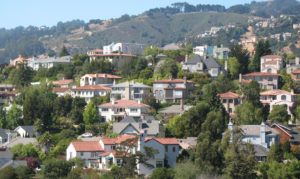 Pollution is the process of making land, water, air or other parts of the environment dirty and not safe or suitable to use. This can be done through the introduction of a contaminant into nature, and all residents of Oakland and the world should pay attention to this matter.
Pollution is the process of making land, water, air or other parts of the environment dirty and not safe or suitable to use. This can be done through the introduction of a contaminant into nature, and all residents of Oakland and the world should pay attention to this matter.
Cars, trucks and buses powered by fossil fuels are major contributors to air pollution. Transportation emits more than half of the nitrogen oxides in our air, and is a major source of global warming emissions in the US. Studies have linked pollutants from vehicle exhaust to adverse impacts on nearly all aspects of human health.
Pollution may muddy landscapes, poison soils and waterways, or kill plants and animals. Humans are also regularly harmed by pollution. Long-term exposure to air pollution, for example, can lead to chronic respiratory disease, lung cancer and other diseases. Toxic chemicals that accumulate in top predators can make some species unsafe to eat.
Pollution in California relates to the degree of pollution in the air, water, and land of the state of California. Pollution is defined as the addition of any substance (solid, liquid, or gas) or any form of energy (such as heat, sound, or radioactivity) to the environment at a faster rate than it can be dispersed, diluted, decomposed, recycled, or stored in some harmless form.
California has eight of the 10 most polluted U.S. cities. Eight of the USA’s 10 most polluted cities, when it comes to ozone pollution, are in California, according to the American Lung Association‘s. The state’s new effort to map the areas most at risk from pollution features hot spots up and down California. But nowhere are there more of the worst-afflicted areas than in Fresno and Oakland.
Why is air pollution a problem in California? Three main factors are behind the unhealthy levels of air pollution in California: Large amounts of air pollution are generated by the activities of 33 million people, terrain or topography traps pollution, and a warm, sunny climate helps form ozone and other air pollutants.
Although the general public is not likely to be affected at this AQI range, people with lung disease, older adults and children are at a greater risk from exposure to ozone, whereas persons with heart and lung disease, older adults and children are at greater risk from the presence of particles in the air.
Marine debris is another global pollution problem that impacts human health and safety in California, endangers wildlife and aquatic habitats, and costs local and national economies millions in wasted resources and lost revenues.
At this time, the top legislative priority is cutting down on plastic pollution through redesigning plastic products and reducing consumer consumption. The Stop Plastic Pollution Page is a website specifically created to help people learn about the impacts of plastic pollution on the environment and the actions taken to reduce plastic pollution.
Polluted runoff, also known as nonpoint source pollution comprises the majority of pollution in the ocean off California. When it rains or when you water your lawn or you wash your car, water picks up pollutants and carries them into our storm drains. Recent tests have found more toxic material, bacteria and pollution in California rivers, streams, bays and lakes than has ever been documented before, according to the federal agency.
Finally the wildfires blazing across Northern California in recent years produced the same amount of air pollution as vehicles did in the state in one year. However, not all air pollution is created equal, and this type of pollution is highly toxic.
The best way to fight pollution in Oakland and in Calfornia is by avoiding amassing unnecessary objects at home or in the office. If you have too much junk at gome, hire a dumpster rental in Oakland to remove your litter and waste materials. Recycle as much as you can to avoid factories over-producing. Use as little plastics as possible as they may end up one day in the ocean.